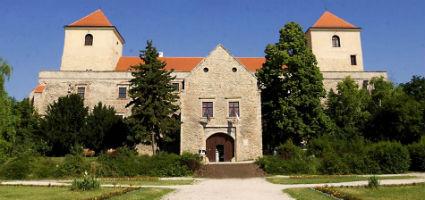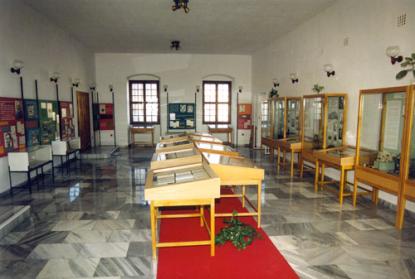2026. January 7. Wednesday
Hungarian Museum for Science, Technology and Transport - Chemistry Museum - Várpalota
 |
Address: 8100, Várpalota Thury-vár
Phone number: (88) 575-670
E-mail: vegymuz@vegyeszetimuzeum.hu
Opening hours: 01.01.2011-31.07.2011.: Closed
|
Museum tickets, service costs:
|
Ticket for adults
|
600 HUF
|
/ capita
|
|
Ticket for students
(6-26 years of age)
|
300 HUF
|
/ capita
|
|
Ticket for pensioners
(62-70 years of age)
|
300 HUF
|
/ capita
|
|
Group guide
|
4000 HUF
|
/ group
|
|
Group guide
|
8000 HUF
|
/ group
|
Before the middle of the 18th century natural sciences had been instructed only as part of philosophy. The teachers of the protestant schools had studied in the western academes, and on returning home they began teach their students accordingly. Chemistry was taught as part of physics.

István Hatvani was the fisrt to teach chemistry from 1750 in Debrecenben. In the second half of the century the mentality of the modern way of training was introduced in the Catholic schools as well.
The Habsburg ruler established a mine officer-training school in Selmecbánya in 1735. The institution in 1770 turned into a university and as such became the cradle of the local chemistry expert instruction and scientific research. The laboratory instruction was first introduced here, which was followed by even the Parisian technical university.Those studying in Selmec became excellent chemists.
In 1777 Maria Teresa extradited the Ratio Educationist, the first governmental ordinance of the Hungarian school system. As a result of the ordinance the central textbooks started to appear. The first Hungarian chemistry school-book was written by the professor of the Transsylvanian metallurgy institute - András Etienne.
The first academical chemistry department was established in Nagyszombat in 1770. The academy was transferred to Buda and later Pest. Its first chemistry and botany professor was phisician Jakab Winterl, one of the pioneers of electrochemistry.
The names of Mihály Kováts, Márton Varga and Ferenc Nyulas became known through the spreading of the Hungarian chemical terminology. The instruction in Hungarian language was stabilized in the first part of the 19th century.
Farkas Bolyai worked as the chemistry professor of Marosvásárhely. The first Hungarian high school text book was published by Lajos Tarczy. The exhibition represents the development and the most renowned figures of the principal training institutions.

István Hatvani was the fisrt to teach chemistry from 1750 in Debrecenben. In the second half of the century the mentality of the modern way of training was introduced in the Catholic schools as well.
The Habsburg ruler established a mine officer-training school in Selmecbánya in 1735. The institution in 1770 turned into a university and as such became the cradle of the local chemistry expert instruction and scientific research. The laboratory instruction was first introduced here, which was followed by even the Parisian technical university.Those studying in Selmec became excellent chemists.
In 1777 Maria Teresa extradited the Ratio Educationist, the first governmental ordinance of the Hungarian school system. As a result of the ordinance the central textbooks started to appear. The first Hungarian chemistry school-book was written by the professor of the Transsylvanian metallurgy institute - András Etienne.
The first academical chemistry department was established in Nagyszombat in 1770. The academy was transferred to Buda and later Pest. Its first chemistry and botany professor was phisician Jakab Winterl, one of the pioneers of electrochemistry.
The names of Mihály Kováts, Márton Varga and Ferenc Nyulas became known through the spreading of the Hungarian chemical terminology. The instruction in Hungarian language was stabilized in the first part of the 19th century.
Farkas Bolyai worked as the chemistry professor of Marosvásárhely. The first Hungarian high school text book was published by Lajos Tarczy. The exhibition represents the development and the most renowned figures of the principal training institutions.
